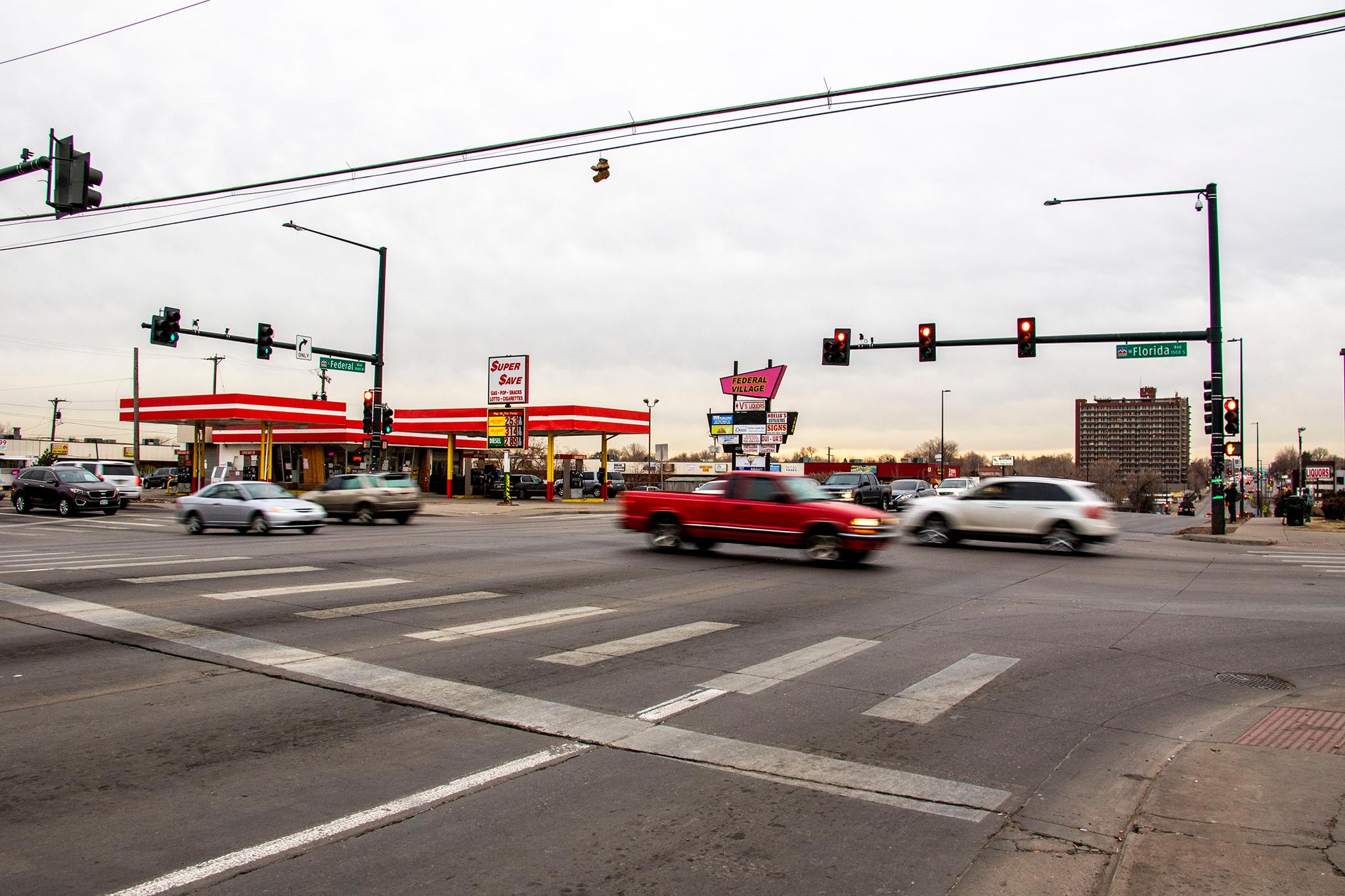On Thursday, Denver officials celebrated a $500,000 grant from the U.S. Environmental Protection Agency to help clean up environmentally compromised properties along Federal Boulevard. The city will offer the money to developers who are interested in dipping their toes into the area, but might otherwise avoid projects due to uncertainty around investigation and cleanup costs.
David Wilmoth, a program manager with the Denver Department of Public Health and Environment's (DDPHE's) brownfield program, said money will be doled out by an advisory committee that will prioritize funds for affordable housing projects along Federal between 6th Avenue and the city of Sheridan's southern border near Centennial Park.
Wilmoth said this could be the start of big change for the corridor.
Ten years ago, DDPHE landed a similar grant for West Colfax Avenue. The artery running through Denver and Lakewood was once lined with mom-and-pop gas stations and dry cleaners that, prior to '80s-era regulations, were prone to leaking toxic materials into soils and groundwater. As Denver and Lakewood worked together to revamp the wicked street, they jointly applied for federal cleanup money to remove burdens from interested developers.
In all, the cities investigated and created cleanup plans for 23 properties along 17 miles of West Colfax. Among them was the area surrounding the former St. Anthony Hospital, between Colfax and Sloan's Lake, which turned into an affordable housing project and the commercial complex that's now home to Alamo Drafthouse.
While the environmental projects aren't solely responsible for the area's transformation, Wilmoth said it was a crucial early step.
"With a lot of these properties on these types of corridors, environmental uncertainty is really the inhibiting factor," he said. "The end result of all of this is it really removes a huge hurdle to redevelopment."
Would-be builders are risk-averse, he said, and try to avoid unexpected costs. If contamination is a possibility in an area, but the extent of it is unknown, developers may decide not to buy property or begin planning a future project. EPA money helped Denver and Lakewood reduce that uncertainty when they paid for sampling and analysis that led to solid, priced-out plans for cleanups.
Wilmoth said Denver and Sheridan are hoping for a repeat on Federal Boulevard, which is already seeing massive upgrades on roads and medians. He said his team has identified 73 historic gas station sites and 21 more dry cleaners, typical for that kind of corridor. Each comes with a possibility that gas or cleaning chemicals are present in the soil.
Development is one way cities deal with historic pollution, which was often deposited into properties before laws were enacted to curb industrial impacts. Today, new projects are often required to deal with the remnants of those earlier eras. But Wilmoth said officials' interest in easing that process goes beyond cleaning up soil.
"It's really that nexus between need and opportunity that is addressing environmental contamination on the property, its providing economic growth and investment by the community," he said, adding: "We're really focused on affordable housing and really looking for for-profit and nonprofit developers to collaborate."
Calling the EPA grant a "win-win for everyone," his department is preparing to dig soil, sample for chemicals and open a path for a host of new projects.













